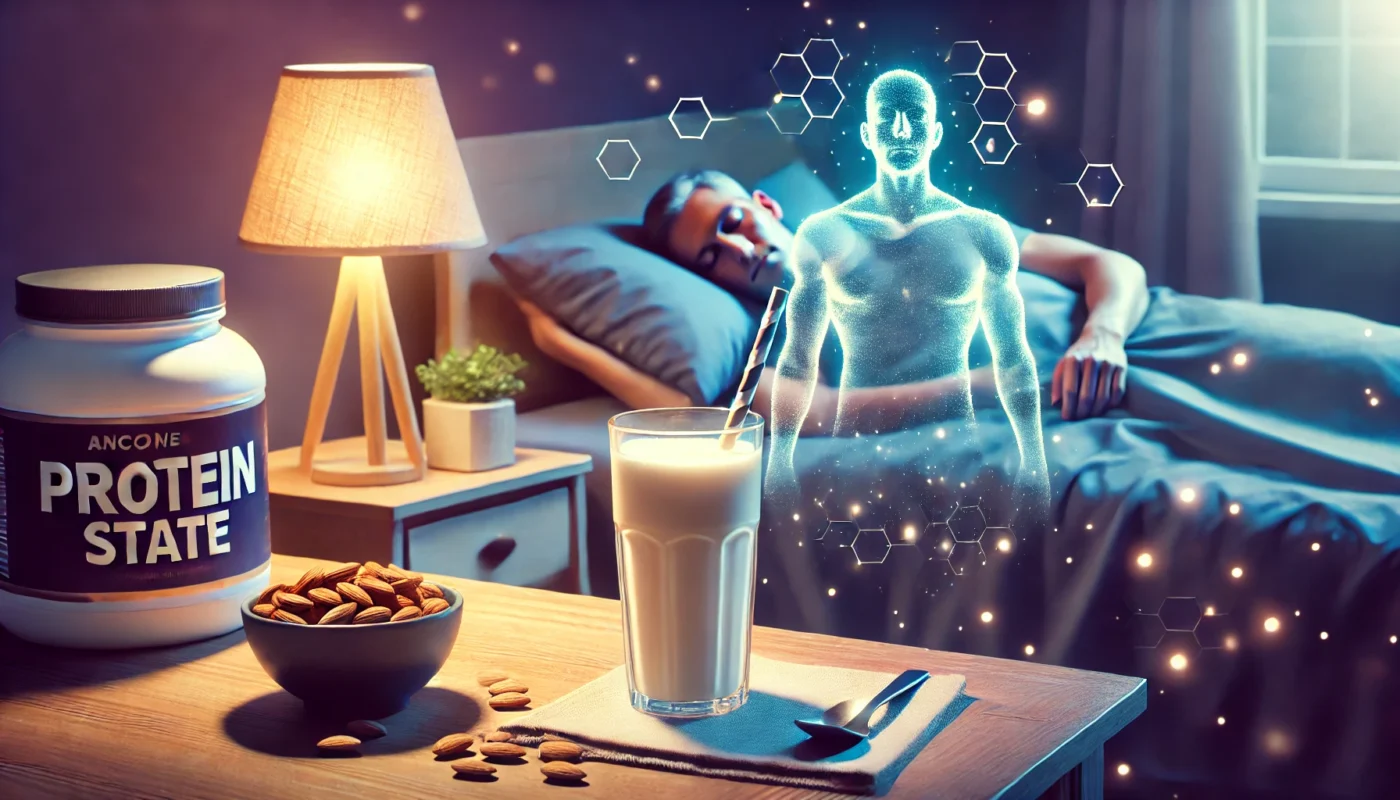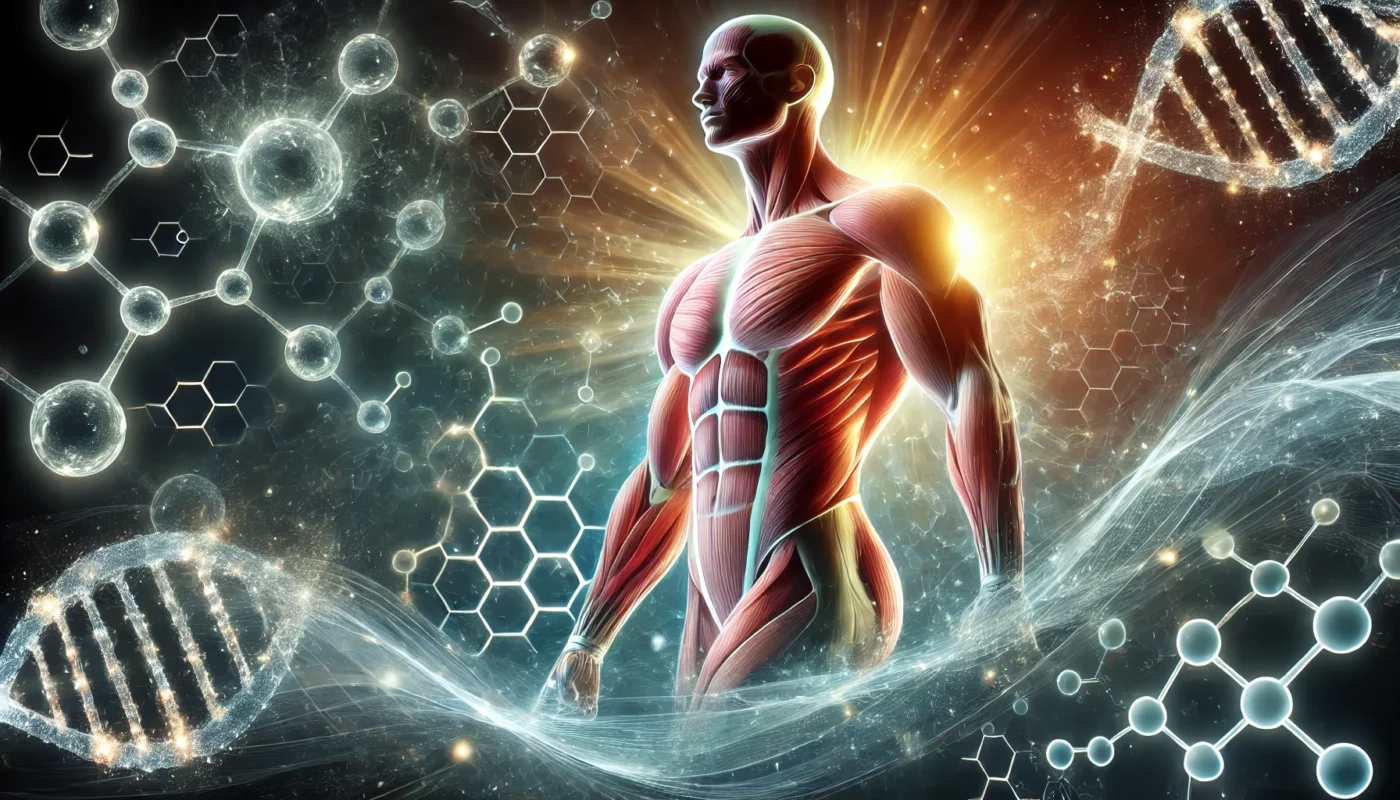The term “anabolic” originates from the Greek word “anabole,” which means “to build up.” In the context of fitness, anabolism refers to the set of metabolic pathways that construct molecules from smaller units. These pathways are responsible for the growth and mineralization of bone and the increase of muscle mass. In simpler terms, anabolism is the process your body uses to build muscle, repair tissues, and store energy for future use.
You may also like: High Protein Foods to Fuel Workouts

The Biological Basis of Anabolism
Anabolism involves various biochemical reactions that occur within cells to synthesize larger molecules. These reactions require energy, which is typically derived from ATP (adenosine triphosphate). This energy is used to convert simple precursors like amino acids into complex proteins, which are crucial for muscle development.
Cellular Mechanisms of Muscle Growth
Within muscle cells, anabolism promotes the synthesis of actin and myosin, the proteins responsible for muscle contraction. The increase in these proteins leads to muscle hypertrophy, which is the enlargement of muscle fibers. This cellular process is fundamental for anyone aiming to enhance strength and muscle size.
Anabolic State Definition
An anabolic state is a condition where the body is primed for growth and repair, favoring the synthesis of complex molecules over their breakdown. This state is critical for muscle growth, and achieving it means your body is effectively using nutrients to build and repair muscle tissues. Several factors can influence the anabolic state, including nutrition, exercise, rest, and hormonal balance.
Factors Influencing Anabolic State
Various internal and external factors can influence whether the body enters an anabolic state. These include genetic predispositions, age, gender, and overall health. Understanding these factors can help tailor specific strategies to maximize anabolic potential.
Anabolic vs Catabolic States
It’s essential to distinguish between anabolic and catabolic states. While anabolism focuses on building up, catabolism involves breaking down complex molecules into simpler ones, releasing energy. Balancing these states is key to maintaining muscle mass and achieving fitness goals.
Importance for Athletes and Bodybuilders
For athletes and bodybuilders, achieving an anabolic state is paramount. It not only enhances performance but also accelerates recovery, allowing for more intense training sessions. Knowledge of how to induce and maintain an anabolic state can provide a competitive edge.
The Role of Nutrition in Anabolism
Nutrition plays a pivotal role in achieving and maintaining an anabolic state. The foods you consume provide the raw materials your body needs to build muscle. Let’s delve into the types of nutrients that support anabolic processes.
Anabolic Food Meaning
Anabolic foods are those that promote muscle growth and recovery. They are typically rich in protein, which provides the amino acids necessary for muscle protein synthesis. Some key anabolic foods include:
- Lean Meats: Chicken, turkey, and lean cuts of beef are excellent sources of protein.
- Fish: Rich in omega-3 fatty acids, fish like salmon and tuna support muscle growth and repair.
- Eggs: A complete protein source that provides all the essential amino acids.
- Dairy Products: Milk, cheese, and yogurt are not only high in protein but also contain important vitamins and minerals.
- Legumes and Nuts: Plant-based proteins that are essential for vegetarian and vegan diets.
Amino Acids and Muscle Protein Synthesis
Amino acids, the building blocks of proteins, are crucial for muscle protein synthesis. Essential amino acids, which the body cannot produce, must be obtained through diet. Foods rich in leucine, an amino acid known to trigger muscle protein synthesis, are particularly beneficial.
The Importance of Carbohydrates and Fats
While protein is crucial, carbohydrates and fats are also vital for maintaining an anabolic state. Carbohydrates replenish glycogen stores, providing energy for workouts and recovery. Fats, particularly healthy fats, support hormonal balance, which is essential for anabolism.
Timing and Frequency of Meals
Eating at regular intervals can help maintain an anabolic state. Consuming protein-rich meals every 3-4 hours can keep amino acid levels elevated, promoting continuous muscle protein synthesis. Strategic meal timing around workouts can further enhance anabolic responses.
Supplements and Anabolism
Supplements like whey protein, branched-chain amino acids (BCAAs), and creatine can support an anabolic state by providing additional nutrients that might be challenging to obtain through diet alone. However, they should complement, not replace, a balanced diet.
Anabolic Exercise and Training
Exercise is a powerful stimulus for anabolism. The right training approach can enhance your body’s ability to build muscle and enter an anabolic state.
Anabolic Workout Routines
Anabolic workouts typically involve resistance training, which promotes muscle hypertrophy by causing micro-tears in muscle fibers. As these tears repair, muscles grow larger and stronger. Key components of an anabolic workout include:
- Progressive Overload: Gradually increasing the weight or resistance in your workouts to challenge your muscles.
- Compound Movements: Exercises like squats, deadlifts, and bench presses that work multiple muscle groups simultaneously.
- High-Intensity Training: Short, intense bursts of exercise followed by rest periods to maximize muscle fatigue and growth.
- Adequate Rest: Ensuring sufficient rest between sessions to allow muscle recovery and growth.
Periodization and Anabolic Response
Periodization involves structuring training programs in cycles to optimize different aspects of fitness. By varying intensity, volume, and type of exercises, periodization can help prevent plateaus and enhance anabolic responses throughout the training cycle.
Define Anabolic State in Training
The anabolic state in training is achieved when your body is able to effectively repair and grow muscle tissue post-exercise. This is facilitated by proper nutrition, rest, and the strategic planning of workouts to avoid overtraining.
Role of Recovery in Anabolic Training
Recovery is a critical component of anabolic training. Techniques such as active recovery, stretching, and foam rolling can help reduce muscle soreness and improve flexibility, allowing for quicker transitions back into high-intensity workouts.
Importance of Rest Days
Incorporating rest days into a training regimen is vital for maintaining an anabolic state. These days allow the body to repair damaged tissues and restore energy levels, preventing burnout and overtraining, which can lead to a catabolic state.

Hormonal Influence on Anabolism
Hormones play a significant role in regulating the anabolic state. Key hormones include:
- Testosterone: Promotes protein synthesis and muscle growth.
- Growth Hormone: Stimulates tissue growth and recovery.
- Insulin: Facilitates nutrient uptake into cells and muscle growth.
Testosterone and Muscle Growth
Testosterone is a primary driver of muscle growth in both men and women. It enhances protein synthesis and increases the release of growth factors. Strategies to boost testosterone naturally include strength training, adequate sleep, and a balanced diet.
Growth Hormone and Recovery
Growth hormone plays a crucial role in cell growth and regeneration. It is released in response to sleep, exercise, and specific amino acids. Ensuring quality sleep and incorporating high-intensity workouts can enhance growth hormone levels.
Insulin’s Role in Nutrient Uptake
Insulin is essential for transporting glucose and amino acids into muscle cells. Managing carbohydrate intake, particularly post-workout, can optimize insulin function, ensuring nutrients are efficiently used for muscle repair and growth.
Balancing Hormones for Anabolic Advantage
Balancing these hormones through diet, exercise, and lifestyle choices is crucial for optimizing anabolism. Stress reduction, adequate rest, and mindful nutrition can help maintain hormonal harmony, promoting an anabolic environment.
Natural Ways to Enhance Hormonal Balance
Incorporating lifestyle changes such as reducing sugar intake, avoiding overconsumption of alcohol, and engaging in regular physical activity can naturally enhance hormonal balance, supporting an anabolic state.
Practical Strategies for Enhancing Anabolism
Achieving an anabolic state is not just about working out hard and eating protein. It involves a holistic approach that encompasses multiple lifestyle factors.
Nutritional Timing
Consuming protein-rich meals or supplements around your workout sessions can enhance muscle protein synthesis. Aim for a balanced intake of protein, carbohydrates, and fats to support energy levels and recovery.
Importance of Hydration
Staying well-hydrated is crucial for maintaining an anabolic state. Water plays a key role in nutrient transport and muscle cell function. Drinking sufficient water throughout the day supports overall metabolic processes and recovery.
Rest and Recovery
Adequate sleep and rest are essential for maintaining an anabolic state. Aim for 7-9 hours of quality sleep per night and incorporate rest days into your training regimen to allow for muscle repair and growth.
Sleep’s Role in Anabolic Processes
During sleep, the body undergoes numerous anabolic processes, including protein synthesis and hormone release. Prioritizing sleep hygiene can significantly impact recovery and muscle growth.
Stress Management
Chronic stress can increase cortisol levels, a hormone that can negatively impact muscle growth. Practice stress-reducing activities such as meditation, yoga, or deep breathing exercises to support an anabolic environment.
Mental Wellness and Anabolism
Mental wellness can influence hormonal balance and recovery. Techniques such as mindfulness and cognitive-behavioral strategies can enhance mental resilience, indirectly supporting an anabolic state.

Conclusion
Understanding and achieving an anabolic state is a powerful tool in your muscle-building arsenal. By focusing on nutrition, exercise, and overall lifestyle, you can optimize your body’s natural ability to grow and repair muscle tissue. Remember, anabolism is not just about what you do in the gym but also how you fuel and care for your body outside of it. Implement these strategies to enhance your fitness journey and achieve your muscle growth goals.
Integrating Advanced Techniques
Incorporating holistic and alternative approaches can further enhance your understanding and application of anabolism in fitness. Continue to educate yourself on the latest research and adapt your strategies to fit your unique needs and goals. By doing so, you will become more adept at navigating the complexities of health and wellness, ultimately leading to improved wellbeing and fitness outcomes.
Continual Learning and Adaptation
The field of health and fitness is ever-evolving. Staying informed about new findings and trends will allow you to refine your approach, ensuring that your methods remain effective and aligned with your personal fitness journey.
Personalized Approaches to Anabolism
Recognize that each individual’s response to anabolic strategies can vary. Personalized approaches, considering factors like genetics, lifestyle, and personal goals, can optimize outcomes and sustain motivation on the path to fitness success.
Testosterone, Growth Hormone, Insulin, Anabolism, Muscle Growth, Nutritional Timing, Hydration, Rest and Recovery, Sleep Hygiene, Stress Management, Mental Wellness, Fitness, Health, Lifestyle, Protein Synthesis, Hormonal Balance, Exercise, Nutrition, Wellbeing, Personalized Approaches
Further Reading:
Anabolism vs. Catabolism: The Role They Play in Your Metabolism
Anabolic-androgenic steroids, Performance-enhancing drugs
Important Note: The information contained in this article is for general informational purposes only, and should not be construed as health or medical advice, nor is it intended to diagnose, prevent, treat, or cure any disease or health condition. Before embarking on any diet, fitness regimen, or program of nutritional supplementation, it is advisable to consult your healthcare professional in order to determine its safety and probable efficacy in terms of your individual state of health.
Regarding Nutritional Supplements Or Other Non-Prescription Health Products: If any nutritional supplements or other non-prescription health products are mentioned in the foregoing article, any claims or statements made about them have not been evaluated by the U.S. Food and Drug Administration, and such nutritional supplements or other health products are not intended to diagnose, treat, cure, or prevent any disease.

